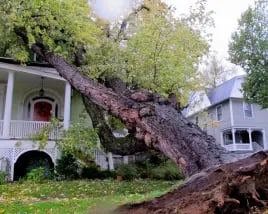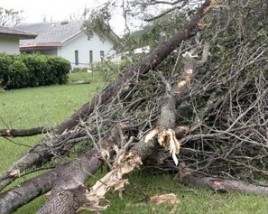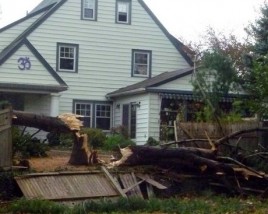Hurricane and Tropical Storm Cleanup

Hurricane Sandy brought devastation to the East Coast. Many of us on the East Coast experienced massive flooding and property damage. Now, we are back on our feet and on our road to recovery. Most of us are getting power back and are heading back to work. Now comes the tricky part; what is the best way to clean up your yard, find the damages and properly restore your part of block? Cleaning up the property after the destructive forces from a hurricane and tropical storm, like Hurricanes Sandy and Irene, is no simple task. The strong forces behind the winds and heavy rains associated with these storms are known to swing debris several miles from their original locations before placing elsewhere. Although some items you find may still be intact, most are shattered into pieces creating a very hazardous situation for anyone who encounters the dispersed debris. When cleaning your yard after a hurricane and tropical storm, one must proceed with extreme caution.

One must be cautious when cleaning up after a Hurricane
Before advancing to the task of cleaning your yard after a storm of this magnitude, there are protective measures that must be employed. To start, you do not know what you may encounter. With this said the first step is to always start with a closed toe work boot or shoe and covering your hands with extra heavy duty and durable work gloves. Next, wearing long sleeve shirts and long pants is a must, no matter how hot or cold it is outside. This will assist in protecting most of your entire body from debris and will shield against getting cut, scraped or damaged. Last, it is always wise to be wearing some sort of head-wear and eye-wear. If you wear glasses that may suffice, however, it is imperative to wear heavy duty eye-wear or sports goggles to protect your eyes. It is also pertinent to wear a headgear such as a hardhat, to protect against damaged branches and limbs that may fall from overhead. Furthermore, when wearing this sort of protective gear, you are also safeguarding against pesky mosquitoes, fleas, ticks and other insects. Keep in mind, mosquitoes especially breed around areas contain a lot of standing or still waters. After a hurricane or tropical storm it is vital you spray yourself with bug spray to help keep the mosquitoes and other pests away when outdoors.
Once you’ve taken the appropriate measures in protecting your body, you must take a quick analysis and overall assessment of your yard to point out any hazards that may need to be handled by a professional. Such hazards may include: house damage, broken windows, roof damage, fallen trees and downed power lines. If you come across downed power lines it is imperative you call your local power service as this may include live wires which become a highly dangerous threat to anyone whom comes in contact with them. DO NOT attempt to remove them yourself as you can become easily electrocuted.. Other potential hazardous items may include dead animals and if you live in a city, large pieces of construction in danger of collapsing.
Because your property is likely to be struggling with maintenance, it is best to start by sorting through the mess, one section at a time. Making separate piles for what can be salvaged and what can be sent to the trash will supplement a quick transition from a debris-filled yard to a properly maintained one. It is likely your neighbors’ yard ornaments, materials and trash bins are found in your yard. If you come across something that isn’t yours, it’s a good idea to place it at the end of your street a couple of days before trash collection as your neighbors may drive past it to and from work. Smaller pieces of debris can be hauled out in heavy duty trash bags and disposed with your local trash collection. However, for the larger pieces of debris, it is wise to pile them into a large heap to be hauled away at a later point in time with a trailer. It is imperative you take extra precautions when caring items like broken glass, nails, screw, metals and other sharp materials to diminish your chances of injury upon impact.

The aftermath of a malicious storm
Once all the painstaking tasks of clearing your lawn and yard are out of the way, it is a good idea to rake through the grass as it is likely you will have leaves and broken branches. At this time if you’re not already wearing closed toe boots, put them on now. You may come across small pieces of debris hiding below leaves and branches. Carefully rake in even strokes throughout your entire front, back and side lawn. This will assist in the making sure you came across every piece of debris and ensure you are ready to move onto a properly maintained lawn, yard and property.
For further Hurricane Sandy aftermath emergency information please visit the following sites:
Pennsylvania – http://www.readypa.org/portal/server.pt/community/pa_gov/20387
New Jersey – http://www.ready.nj.gov/
Delaware – http://dema.delaware.gov/ Hurricane Sandy Hotline – (800) 464-4357